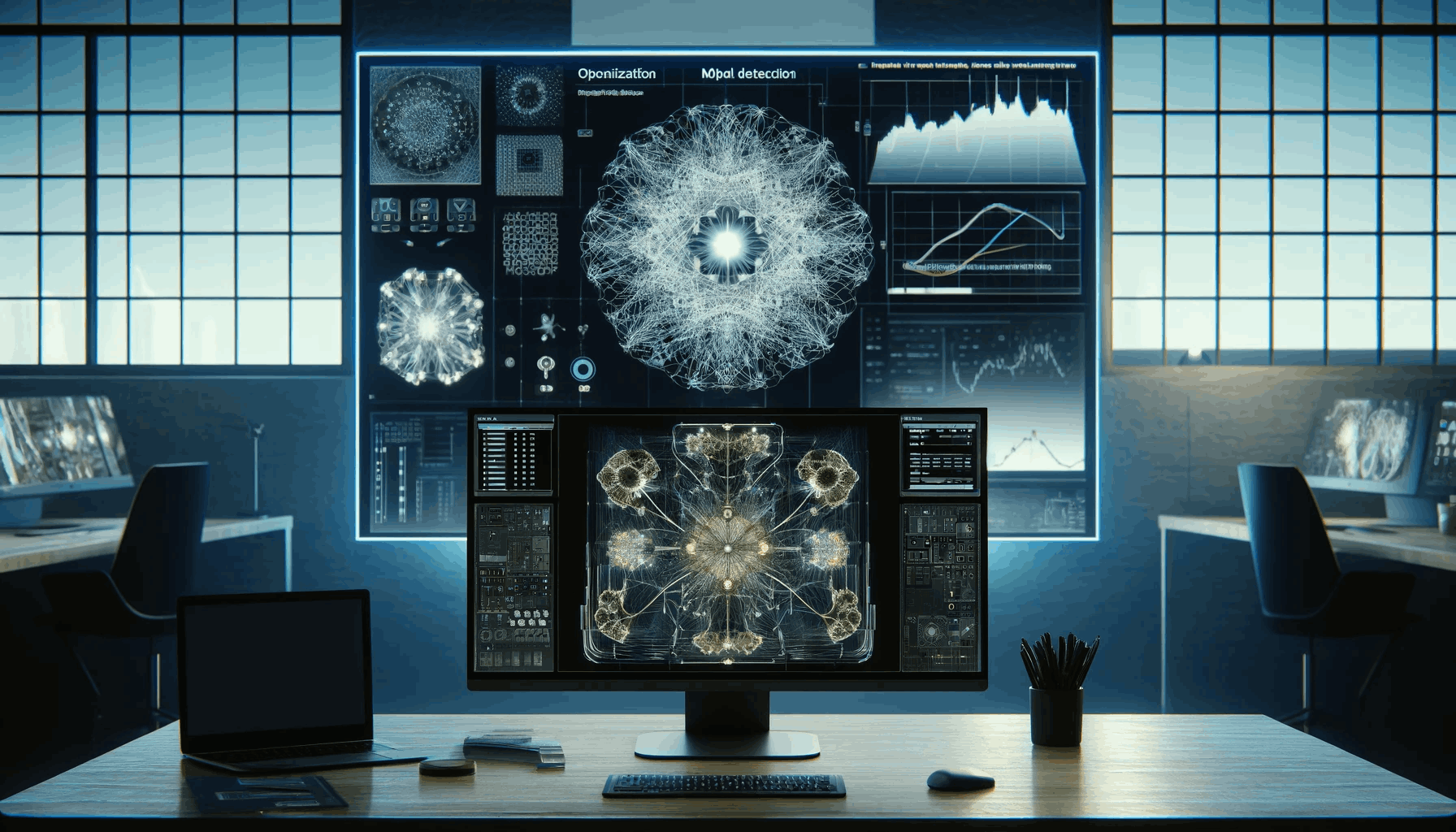Learn how to optimize object detection AI models for efficiency with these practical tips and techniques.
Optimizing Object Detection AI Models for Efficiency
Object detection makes robots and driverless cars navigate their surroundings and actually “see.” The evolution of this technology is significant, if not vital, for the further application of artificial intelligence across industries.
Despite its unraveled success, object detection technology still has limitations. These can include iPhones’ inability to see their owners’ morning faces or autopilot cars’ failure to detect Halloween kids. The solutions to such issues and expanding the possibilities of AI-based object detection require and, in fact, attract huge investment. No wonder that between 2016 and 2025, AI software for vehicular object detection is expected to generate 9 billion U.S. dollars.
In this article, we shall describe the current state of AI object recognition technology, review the existing limitations, and discuss possible ways of optimizing it.
Understanding Object Detection in AI
Object detection involves the localization and recognition of objects within an image or video. By identifying the position and classifying the objects present, AI models can provide valuable insights and enable decision-making processes.
The Role of AI in Object Detection
Artificial intelligence plays a crucial role in creating smart machines. It provides algorithms and computational power that enable machines to detect and comprehend objects in their environment. With the advancements in deep learning and neural networks, AI models have become increasingly smarter.
Key Components of Object Detection Models
Object detection models typically consist of several key components, such as a backbone network, a region proposal network (RPN), and a classifier. The backbone network is responsible for extracting features from the input image. RPN generates region proposals for potential objects. The classifier determines the class and location of the detected objects.
One crucial aspect of object detection in AI is the concept of anchor boxes. Anchor boxes are pre-defined bounding boxes of different aspect ratios and scales that are used by the region proposal network to predict potential object locations. By using anchor boxes, the model can improve its accuracy in detecting objects of various sizes and shapes.
Another important consideration in object detection is the trade-off between speed and accuracy. Some object detection models prioritize speed by sacrificing a certain level of accuracy, while others focus on achieving high accuracy even if it means slower processing times. This trade-off is often influenced by the specific use case and requirements of the application.

The Need for Efficiency in AI models
While object detection AI models have seen significant advancements, there is a growing demand for efficiency. Inefficient models not only consume more computational resources but also hinder real-time applications and limit deployment on devices with limited processing power.
Challenges in Current AI Models
Despite their effectiveness, current AI models face several challenges in terms of efficiency. The large number of parameters and complex architectures often result in models that require substantial computational resources to execute. This is especially problematic when deploying models on edge devices or operating in scenarios with stringent resource constraints.
The Impact of Inefficient Models
Inefficient object detection models can have significant flaws, impeding real-time applications that require prompt decision-making. Moreover, they can hinder the scalability and accessibility of AI solutions, limiting their potential impact in various domains. Additionally, overreliance on ineffective object-detection algorithms may cause real harm. For example, recently several resources, including Scientific American and Wired described the cases when police wrongfully arrested people, identified as criminals by face recognition technology.
Efforts to Enhance Efficiency
To address the pressing need for efficiency in AI models, researchers and developers are exploring various strategies. One approach involves optimizing model architectures through techniques like pruning redundant parameters and employing quantization to reduce the computational burden. Additionally, advancements in hardware acceleration, such as the integration of specialized AI chips, are being leveraged to enhance the speed and efficiency of model inference.
The Role of Transfer Learning
Transfer learning, a technique where a pre-trained model is fine-tuned on a specific task, has emerged as a valuable tool in improving the efficiency of AI models. By leveraging knowledge from pre-existing models, transfer learning enables faster convergence during training. It reduces the need for extensive computational resources, making it particularly beneficial for tasks like object detection. In terms of object detection, transfer learning helps to cut the number of resources for AI training. For example, recently, a group of scientists managed to train an AI algorithm to set a diagnosis based on just 45 images.
Want to learn more about transfer learning?
Find out more data and interesting use cases in our article “Balancing Algorithms and Data”
Strategies for Optimizing AI Models
To address the need for efficiency in object detection AI models, various strategies can be employed. By optimizing data preprocessing techniques and refining model architectures, substantial improvements in efficiency can be achieved.

Data Preprocessing Techniques
Preprocessing techniques such as data augmentation, image resizing, and normalization can significantly impact the efficiency of object detection models. By preprocessing the input data to reduce noise, enhance image quality, and normalize pixel values, models can operate more efficiently.
Model Architecture Refinements
Optimizing the architecture of an AI model is another crucial factor in improving efficiency. Techniques such as model pruning, knowledge distillation, and network quantization can reduce the computational complexity and memory footprint of the model without significantly sacrificing performance.
Furthermore, another important aspect to consider when optimizing AI models is hyperparameter tuning. By fine-tuning hyperparameters such as learning rate, batch size, and regularization techniques, the performance of the model can be significantly improved. Hyperparameter tuning involves systematically testing different combinations of hyperparameters to find the optimal configuration that maximizes the model’s efficiency and accuracy.
Additionally, the choice of loss function plays a vital role in the optimization of AI models. Selecting an appropriate loss function that aligns with the objectives of the model can lead to better convergence during training and improved generalization on unseen data. Common loss functions used in object detection tasks include cross-entropy loss, smooth L1 loss, and focal loss, each serving different purposes in guiding the model towards better performance.
Evaluating the Performance of Optimized Models
Measuring the efficiency of optimized AI models is a crucial step in evaluating their performance and determining their suitability for deployment in real-world scenarios.
Metrics for Measuring Efficiency
Various metrics, such as inference time, memory utilization, and computational requirements, can be used to assess the efficiency of object detection AI models. These metrics provide quantitative insights into the model’s performance and enable informed decisions regarding its deployment.
Interpreting Evaluation Results
Understanding and interpreting the evaluation results of optimized models is paramount for making informed decisions. By analyzing the performance metrics in conjunction with the specific requirements of the application, stakeholders can determine whether the optimized models meet their efficiency criteria.
Furthermore, it is essential to consider the trade-offs between different metrics when evaluating optimized models. For example, a model with fast inference time may require higher computational resources, while a model optimized for memory utilization may sacrifice some accuracy in detection. Balancing these trade-offs is a critical aspect of model evaluation and deployment.
Another important factor to consider when evaluating optimized models is the scalability of the solution. A model that performs efficiently on a small dataset may not necessarily scale well when applied to larger, more complex datasets. It is crucial to test the model’s performance across a range of data sizes to ensure its effectiveness in real-world scenarios with varying levels of complexity.

Want to learn more about AI-based image recognition?
Find interesting facts and clear explanations in our article “Visual Data: The Role of AI in Image Classification”
Future Trends in AI Model Optimization
The field of AI model optimization is continually evolving, with emerging technologies and predicted developments showing promise in further enhancing efficiency.
Emerging Technologies for Optimization
Technologies such as automated architecture search, neural architecture optimization, and hardware-specific optimizations are gaining traction in the quest for more efficient AI models. By leveraging these technologies, researchers and practitioners can push the boundaries of what is currently possible.
Predicted Developments in AI Efficiency
In the coming years, advancements in hardware and software technologies are expected to contribute to improved AI model efficiency. From specialized hardware accelerators that are dedicated to AI workloads to advancements in deep learning frameworks, the future holds immense potential for optimizing AI models for efficiency.
Automated architecture search is a cutting-edge technique that involves using algorithms to automatically explore and discover optimal neural network architectures. This approach eliminates the need for manual trial and error, saving valuable time and resources. By allowing AI models to evolve and adapt through automated architecture search, researchers can uncover novel architectures that were previously unexplored, leading to more efficient models.
Neural architecture optimization takes the concept of automated architecture search a step further by incorporating reinforcement learning techniques. This approach allows AI models to learn and optimize their own architectures based on performance feedback. By continuously adapting and refining their architectures, AI models can achieve higher levels of efficiency and accuracy.
Hardware-specific optimizations focus on tailoring AI models to take advantage of specialized hardware accelerators. These accelerators are designed to handle the computational demands of AI workloads more efficiently than general-purpose processors. By optimizing AI models to leverage these hardware accelerators, researchers can achieve significant improvements in performance and energy efficiency.
In addition to these emerging technologies, predicted developments in hardware and software are set to revolutionize AI model optimization. Specialized hardware accelerators, such as graphic processing units (GPUs) and tensor processing units (TPUs), are becoming increasingly powerful and efficient, enabling faster and more efficient AI computations.
Furthermore, advancements in deep learning frameworks, such as TensorFlow and PyTorch, are constantly being made to optimize model training and inference processes.
As the field of AI model optimization continues to evolve, it is crucial for researchers and practitioners to stay informed about emerging technologies and predicted developments. By keeping abreast of the latest advancements, they can stay at the forefront of AI model optimization and unlock the full potential of these powerful technologies.
Want to build a proprietary solution based on AI-based object detection?
Book a free consultation with eNest to discuss your business case and specification. You will get a chance to receive all the answers you need in a one-on-one call with one of our certified AI specialists. Book a meeting now!
Have a question?
Speak to Data Scientist
 Jagdeep Chawla
Jagdeep ChawlaMS in Data Science
NorthWestern Univeristy, Illinois
MS in Data Science
NorthWestern Univeristy, Illinois




